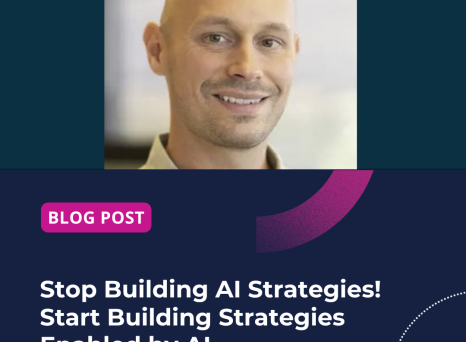”If everyone is moving forward together, then success takes care of itself.” Henry Ford made collaborative work and the subsequent results sound simple. But aligning individual tasks with a business’s wider strategy isn’t always easy or obvious.
”If everyone is moving forward together, then success takes care of itself.” Henry Ford made collaborative work and the subsequent results sound simple. But aligning individual tasks with a business’s wider strategy isn’t always easy or obvious. It’s an even bigger challenge for Project Management Offices (PMOs) managing the complexities of multiple projects or portfolios at once. Oftentimes, you’re juggling crunched timelines and tight budgets across multiple projects that are all considered high priorities. So, what’s the solution? That’s where swarm intelligence (SI) comes in. Let’s explore how artificial intelligence (AI)-driven SI works and how PMOs can benefit.
An Introduction to Swarm Intelligence
Swarm intelligence is a learning and decision-making model inspired by the natural world. It applies the behavior of social creatures that work together to digital technology. Think birds, bees, ants, and fish. These animals collaborate to achieve things they couldn’t possibly do alone—from foraging and building to defense and navigation. Karl von Frisch first explored the concept when he discovered that bees communicate about the quality and location of resources via a movement known as the “waggle dance.”
Some of the principles of SI include:
- There is no single leader. Agents are autonomous and can make decisions based on common rules, their own skills and expertise, and their environment.
- The group forms its own patterns and behaviors. This results in a well-organized system (without an established hierarchy).
- Individuals share information and coordinate with each other to enable fast problem-solving.
- The group trusts the process, confident that agents will find the best processes and achieve the best outcomes through experimentation.
These principles are evident in several AI and machine learning (ML) algorithms and applications, from optimization to problem-solving.
Particle Swarm Optimization (PSO)
Particle Swarm Optimization (PSO) is an algorithm that solves problems by following some of the key principles of SI. It helps find the optimum solution to problems with countless variables, solutions, and outcomes. This could include developing the ideal schedule of work for employees or planning an optimal route for deliveries. It can even prioritize the most valuable tasks in a business’s portfolio of projects. So, how does it work? Let’s explain it in simple terms.
- It starts with a digital space where every possible variable and solution to your problem exists.
- Every potential solution in that digital space is represented by a particle.
- The algorithm assigns particles in random positions within that digital space.
- Then, it evaluates every particle to assess how effective or ‘fit’ the solution is.
- Particles track their own performance and keep hold of their best-known solutions.
- Each particle identifies the best overall solution (based on variables) and shares it with the group.
- Particles then update their velocity and position within the digital space. They will ensure they’re moving in the same direction, towards their personal best position and the global best position.
- The algorithm repeats the process until the optimal outcome is secured.
Ultimately, PSO algorithms help businesses deliver the best outcomes for their projects and portfolios. They do this while also providing team members with autonomy and eliminating the need for one decision-maker.
Swarm Intelligence for the PMO
SI supports cross-team collaboration and enables businesses to optimize projects and project portfolios with a holistic approach. You can elevate your project portfolio’s success by using an intelligent project portfolio management (PPM) tool that utilizes SI principles, or PSO in particular. By embracing cutting-edge, AI-driven technology to maximize the value of your project portfolios, your business reaps the rewards. These include elevated ROI, streamlined processes, and faster decisions.
To apply PSO to your PMO, there are a few things you’ll need.
First, you’ll need access to data regarding costs, resources, timings and so on. It’s important to ensure the data is high-quality and up-to-date to ensure it reflects the business accurately.
Then, you’ll need to implement an innovative tool that uses PSO algorithms to help you identify the best outcomes. This could be simulation software, a custom tool built in-house, or an integrated PPM solution with AI-enhanced features.
Once implemented, the benefits of PSO to businesses include:
- Faster and more effective decision-making thanks to clearer priorities
- Better resource utilization and subsequent cost-saving opportunities
- Process optimization and increased efficiency
- Greater agility, empowering businesses to adapt to customer needs
- Faster speed-to-market for new product launches
- Scalability to meet the needs of your fast-growing businesses
- Accurate predictive analytics thanks to tried and tested solutions
- Stronger collaboration capabilities
Planisware, for example, uses AI-driven PSO technology to help you achieve your PPM goals. It can balance resources, ensure optimal allocation, and ultimately optimize portfolios while considering any constraints and objectives. Planisware provides users with speed and efficiency, alongside all-important transparency and control. And PMOs gain complete visibility into the process to make informed decisions confidently.


